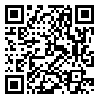Volume 16, Issue 3 (5-2016)
Modares Mechanical Engineering 2016, 16(3): 273-284 |
Back to browse issues page
Download citation:
BibTeX | RIS | EndNote | Medlars | ProCite | Reference Manager | RefWorks
Send citation to:



BibTeX | RIS | EndNote | Medlars | ProCite | Reference Manager | RefWorks
Send citation to:
Beigzadeh B. Amputee walking robot: a different approach to biped walking problem. Modares Mechanical Engineering 2016; 16 (3) :273-284
URL: http://mme.modares.ac.ir/article-15-7345-en.html
URL: http://mme.modares.ac.ir/article-15-7345-en.html
Abstract: (4444 Views)
Although it seems that two categories of robotic systems, the dynamic object manipulation and dynamic biped walking systems, are completely different to be dealt with at the first glance, we believe that there exists strong relationship between these two types of robotic systems. This paper studies the correlation of the dynamic biped walking and dynamic object manipulation in all areas (passive, underactuated and fully-actuated classes). In this regard, the virtual problem of "the amputee walking robot" is defined to describe the relationship between these two kinds of robotic systems. From this viewpoint, the problem of dynamic biped walking is a special case of dynamic manipulation of multibody objects in which the multibody object does have a structure similar to the structure of biped robots. In other words, we can say that the ground manipulates the biped robot which is considered as a multibody object. Then, the concept of correlation is investigated in three different classes of the problem: passive, underactuated, and fully-actuated systems. For each of three categories, appropriate examples are studied. It will be shown that the details of the walking problem could be extracted from the mother problem of dynamic manipulation of multibody objects in all its aspects.
Article Type: Research Article |
Subject:
robatic
Received: 2016/01/16 | Accepted: 2016/02/14 | Published: 2016/03/12
Received: 2016/01/16 | Accepted: 2016/02/14 | Published: 2016/03/12
| Rights and permissions | |
 |
This work is licensed under a Creative Commons Attribution-NonCommercial 4.0 International License. |







